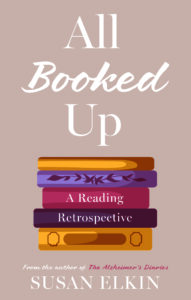It is surprising how often Radio 3’s Private Passions widens my reading. But as my own forthcoming new book (All Booked Up: A reading retrospective – 28 March, 2024 ) makes clear, everything in my life comes back to reading.
Merlin Sheldrake is a mycologist and musician. Fungi, and how they “make our worlds, change our minds and shape our futures” are his life’s work.. And, best of all, like Sir David Attenborough, he has that rare gift for communication which means he can make complex science accessible to us all. And how wonderful that his own illustrations are drawn in the ink of the black-cap mushroom. He is an infectious enthusiast.
At school in the early 1960s I was taught that fungi are plants. But the taxonomy has been changed since then. The natural world now comprises animals, plants and fungi. The key word is “network” because that’s how fungi form and mycelial networks can do some pretty remarkable things. For example, they seem to use waves of electrical activity to transmit signals round a network. Some slime moulds can find their way out of a maze. So could this have relevance to the fast growing field of “biocomputing”? By this time, had I been a cartoon character, my eyes would have been out on stalks.
And did you know that there’s a fungus which produces enough light – bioluminescence – for miners to see their hands by?
Or take Ophiocordyceps and other insect manipulating fungi which have evolved a remarkable ability to cause harm to the animals they influence. It commandeers an animal body by growing inside and through it. There’s an astonishing photograph of an infected ant in Sheldrake’s book. He reminds us, too, of all those old stories about possession of bodies by voices and spirits – as science meets science-fiction meets folklore. He’s interesting on the history of mushroom consumption too, especially the truffle industry and the use of mind-altering fungi, the so-called “magic mushroom”. He tries out the latter under controlled medical supervision as part of his research for this book.
Fungi have well known medicinal potential. Penicillin is, after all, a mould. They can also be grown in labs to create a very strong substitute for leather but it’s the activity most of us are unaware of which really matter. Fungi – and Sheldrake gives statistics about their extraordinary prevalence which I can’t conceptualise – are at the basis of all life. They link organisms such as trees in forests. They make roots grow. They line our bodies and ensure everything works properly. Bread and beer are discussed at some length. Symbiosis is everywhere although, interestingly the concept wasn’t recognised or the term coined until the nineteenth century.
Sheldrake has travelled the world in his pursuit of fungi and he knows hundreds of mycologists: both the sort with research fellowships in famous universities and the “citizen mycologists” for whom he has great respect because they too are continuously making and sharing new discoveries.
There’s an environmental message as well. Fungi are essential to life. If we destroy them with fungicides and/or by wrecking the habitats they thrive in, the cost to humankind will be huge. Fungi have been on this planet for a lot longer than mammals and, another of Sheldrake’s points is that it would be helpful to start looking at life on earth holistically rather than hierarchically because it is all inextricably entangled.

Next week on Susan’s Bookshelves: Fresh Water for Flowers by Valerie Perrin